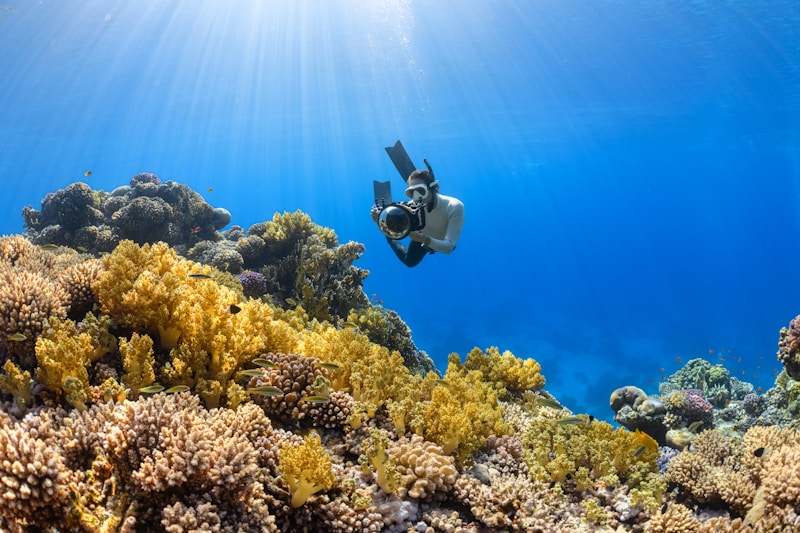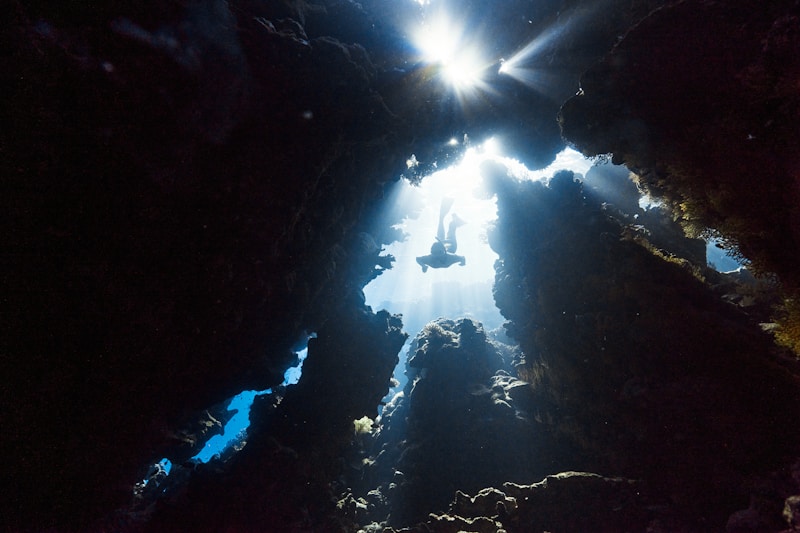7 Questions
Match the following stages of photosynthesis with their locations:
Light-dependent reactions = Thylakoid membrane Light-independent reactions = Stroma RuBP conversion to G3P = Stroma Chlorophyll absorption of sunlight = Thylakoid membrane
Match the following energy carriers with their roles in photosynthesis:
ATP = Temporarily stores energy during photosynthesis NADPH = Temporarily stores energy during photosynthesis
Match the following protein complexes with their roles in the light-dependent reactions:
Photosystem II (PSII) = Found embedded in the thylakoid membrane Photosystem I (PSI) = Found embedded in the thylakoid membrane
Match the following with their function in photosynthesis:
Light-dependent reactions = Convert solar energy into chemical energy Light-independent reactions (Calvin cycle) = Fix CO2 and build carbohydrate molecules RuBisCO = Catalyzes the fixation reaction by combining CO2 with RuBP ATP and NADPH = Products of the light-dependent reactions with a short lifespan
Match the following with their role in the Calvin cycle:
RuBP = Regenerates to react with more CO2 G3P = Leaves the cycle to become part of a carbohydrate molecule RuBisCO = Key enzyme that catalyzes the fixation reaction Carbohydrate molecules = Built using the stored energy from ATP and NADPH
Match the following with their function in cellular respiration:
Photosynthetic organisms = Carry out both photosynthesis and cellular respiration Sunlight = Source of energy for photosynthesis Interconvert essential metabolites = Performed by photosynthetic organisms Access energy from the sun = Allows living organisms to store it in the form of carbohydrates
Match the following with their role in energy conversion:
Solar energy = Converted into chemical energy in the light-dependent reactions ATP and NADPH = Used to fix CO2 and build carbohydrate molecules in the Calvin cycle Carbohydrates = Form in which solar energy is stored for later use RuBisCO = Catalyzes the reaction to combine CO2 with RuBP
Study Notes
Making Carbohydrates Using Light Energy: Photosynthesis and Light-Dependent Reactions
Photosynthesis is a process that converts solar energy into chemical energy, which is then used to build carbohydrate molecules. This process takes place in chloroplasts and involves two sequential stages: the light-dependent reactions and the light-independent reactions (also known as the Calvin cycle).
Light-Dependent Reactions
During the light-dependent reactions, energy from sunlight is absorbed by chlorophyll and converted into stored chemical energy. This energy is used to power the reactions of the Calvin cycle. The light-dependent reactions occur at the thylakoid membrane, where chlorophyll absorbs energy from sunlight and converts it into chemical energy. Two types of protein complexes, photosystem II (PSII) and photosystem I (PSI), are found embedded in the thylakoid membrane and play crucial roles in these reactions.
The energy carriers that move energy from the light-dependent reactions to the light-independent reactions are ATP and NADPH. These energy carriers are temporarily stored in ATP and NADPH, and their energy is used to convert the six-carbon compound RuBP into three three-carbon molecules of G3P. One of these three-carbon molecules leaves the cycle to become part of a carbohydrate molecule, while the remaining G3P molecules stay in the cycle to be regenerated into RuBP, which is ready to react with more CO2.
Light-Independent Reactions (Calvin Cycle)
The light-independent reactions, also known as the Calvin cycle, use the energy stored in ATP and NADPH to fix CO2 from the environment and build carbohydrate molecules. The key enzyme in this process is RuBisCO, which catalyzes the fixation reaction by combining CO2 with RuBP. The products of the light-dependent reactions, ATP and NADPH, have a lifespan in the range of millionths of seconds, which is why most scientists and instructors no longer use the term "light-independent reactions".
The overall function of the light-dependent reactions is to convert solar energy into chemical energy, which supports the light-independent reactions and fuels the assembly of sugar molecules. Photosynthetic organisms, such as plants and algae, carry out both photosynthesis and cellular respiration, allowing them to access energy in both the light and interconvert essential metabolites.
In summary, making carbohydrates using light energy involves two stages: the light-dependent reactions, which absorb and convert solar energy into chemical energy, and the light-independent reactions (Calvin cycle), which use this stored energy to fix CO2 and build carbohydrate molecules. Photosynthesis is a crucial process that allows living organisms to access energy from the sun and store it in the form of carbohydrates for later use.
Learn about the process of photosynthesis, where solar energy is converted into chemical energy to build carbohydrate molecules. Explore the two sequential stages involved: the light-dependent reactions and the light-independent reactions (Calvin cycle).
Make Your Own Quizzes and Flashcards
Convert your notes into interactive study material.




